Scientific Name: Boswellia Serrata
Origin: India
Plant Part: Resin
Scent: Fresh, Woody, Balsamic, Spicy, and Fruity
Color: Light Yellowish
Consistency: Thin
Perfumery Note: Base
Initial Aroma Strength: Mild Medium
Extraction Method: Steam Distilled
Frankincense Essential Oil: Benefits, Uses, and Blends
The word “frankincense” originates from Old French: the word franc—which means free, or pure—in combination with encens, which translates to incense. Coming from the resin of the Boswellia tree, frankincense is one of the world’s oldest commodities. The tree is native to Northern Africa and the Middle East, but can also be found in areas such as Oman and Yemen.
Also known as olibanum, frankincense is a common ingredient in incense, oils, and perfumes. Due to increases in demand, over-exploitation, and the destruction of forests for agricultural use, it is important to ensure you are purchasing high-quality, sustainable frankincense essential oil.
Where Does Frankincense Essential Oil Come From?
As mentioned above, frankincense oil is extracted from the Boswellia tree. To get frankincense from the trees a tapper will cut into the trunk, extracting the sap. This sap then hardens into what we call resin. A tree must grow for about 8-10 years before it is large enough to tap, which means there can be quite a wait between the time planting occurs and when it is ready to harvest. After harvesting the sap, the resin then goes through a process of steam distillation, which creates the essential oil. VINEVIDA uses all-natural sources to ensure the resulting product is of the premium. If frankincense oil isn’t extracted properly it can result in an inferior product, illustrated by a duller color and a fainter aroma.
Modern Uses of Frankincense Essential Oil
Historically, frankincense is probably most famous for its starring role in the tale of the Three Wise Men. In this Christian Bible story depicting the birth of Jesus, three men arrive bearing gifts - one of which is frankincense. Archaeological history shows frankincense was often used by the Greeks and Romans in holy rituals, both of whom were large importers. Historical evidence in the form of the writings of Pliny the Elder—a Roman historian and botanist—shows us the many ancient uses of frankincense. Frankincense was a common ingredient in traditional medicines as well as being used as an insect repellent. Some people were even known to chew the edible resin, using it as a sort of gum. (Note that this was only pure resin, and it is never advisable to ingest any essential oil.)
Today, frankincense oil is used for many varying things. In terms of holistic healing, this essential oil is a key component in aromatherapy, Chinese medicine, and Ayurveda. It is a common belief that frankincense essential oil benefits the skin, which is why it is often used as an additive in many popular cosmetic products.
As expected of a product that has been around for thousands of years, the benefits of frankincense essential oil are numerous. While a lot of the claims about this oil’s benefits come from anecdotal research, there is considerable science-backed research available for your consideration. Studies indicate frankincense essential oil may be able to reduce inflammation, improve skin tone, reduce scarring, and even fight cancer.
Frankincense Essential Oil Benefits: Component Breakdown
- a-Pinene: a-Pinene is a known antimicrobial agent. A study looking at the gram-positive bacteria that cause infectious endocarditis found a-Pinene to be an effective inhibitor. Scientists are now recommending further research to gauge its use in antimicrobial therapies.
- Sabinene: A study looking at sabinene found evidence this compound may be an extremely effective anti-inflammatory. It is one of the main components contributing to frankincense essential oil benefits.
- d-3-Carene: Studies looking at delta-3-carene indicate it may have antifungal properties.
- Limonene: Limonene mainly originates from the rind of citrus fruits, though it is also present in other essential oils such as frankincense. Studies indicate it has antioxidant properties, as well as the ability to work as an anti-inflammatory agent. Currently, limonene’s most common use is as an additive. You can find it in food, beverages, toiletries, cleaning products, and even insect repellents. It's another significant property that plays a huge role in frankincense essential oil benefits.
Frankincense Essential Oil Uses: For Wholesale Purposes
In 2020 global demand for essential oils reached almost 247 kilotons. Analysts anticipate the market will continue to grow, compounding by approximately 7.5% each year, from now until 2027. As people gradually become aware of what essential oils can offer in terms of fragrance, health, and well-being, aromatherapy is rapidly gaining in popularity. You now know that frankincense—with its enticing, woodsy aroma—is one of the most popular essential oils. Let’s take a look at how you can incorporate frankincense into products, cosmetics, soap, and more.
Aromatherapy
Most people have heard of aromatherapy, but not everyone knows what it is. Aromatherapy is a holistic method of healing aimed at improving mental and physiological well-being. While the practice originates from Middle Eastern and Asian countries, it is becoming more and more popular in the Western world. This is because of the sheer number of people moving towards a more natural approach to health.
Using frankincense in aromatherapy may be able to help reduce symptoms of inflammation, including those brought on by rheumatoid arthritis. Studies show that a certain component of boswellic acid can act as an inhibiting agent on certain enzymes that trigger inflammation. Frankincense essential oil used in aromatherapy can include adding it to baths or diffusers, mixing it with a massage or carrier oil, and applying topically.
Examples of products you can use in conjunction with aromatherapy include lotions, creams, bath salts, face masks, hair masks, and many more. Simply add a few drops of the oil with your favorite products to enjoy its fragrance and benefits daily.
Soap Making
Most commercial soaps are full of chemicals, which can penetrate through the skin. Natural soaps offer a safe alternative, and demand is rising as consumers become aware of what is in their products. Estimates put the essential oil soap market at a value of 458.6 million by 2026, which is almost double what it was ten years prior. At VINEVIDA we strongly support clean and natural products. This is why we offer competitive rates to all artisan soap makers.
 Frankincense essential oil is a base note fragrance, which means it provides a foundation for soaps. While aromatic on its own, it will even out the other scents you wish to add and help them to last longer.
Frankincense essential oil is a base note fragrance, which means it provides a foundation for soaps. While aromatic on its own, it will even out the other scents you wish to add and help them to last longer.
If you want to make natural soap at home, but don’t know where to start, liquid soap is your easiest option. Essential oils can react negatively to added chemicals, so it is important to use a natural base. Look for pure products that contain no added fragrance. Once you have your base soap, simply add 1g of the oil for every 100g of liquid soap. Add in more after if you wish for a stronger scent, but it is better to start with less. You can always add more, but you can’t take it back out
Candles & Incense
Similar to soap, commercial candles, and incense can expose consumers to many toxins—including the carcinogens given off by paraffin wax. The use of essential oils in candles is growing exponentially. Forecasts expect the global candle market to reach over USD 13 billion by 2026. Candles made from natural sources may cost more, but consumers are willing to pay for transparency. Studies show fragrance is the most important factor when a consumer purchases a candle, illustrating the importance of scent. Essential oils are highly potent, meaning they offer great fragrance throw.
One particularly large importer of frankincense oil is the Catholic Church. It is a key ingredient in the large quantity of incense they use for ceremonies and services. Many consumers of incense are becoming more aware of health risks, and using essential oils instead of synthetic fragrances is a step in the right direction.
If you want to try making your own non-toxic candles, check out our blog post on DIY candle making.
Cosmetics and Skincare
Many cosmetic products include frankincense oil for its fragrant aroma, but it may have other benefits. Initial research shows promise when looking at frankincense essential oil benefits for skin, particularly in regards to tissue remodeling. This may be of particular interest to those who suffer from acne or scarring, particularly on the face.
This potential ability to repair and regenerate tissues means frankincense may also prove beneficial in reducing signs and symptoms of aging. When added to products it may help improve skin tone by reducing age spots, scarring, and other appearances of sun damage.
Room Spray
Though more research is necessary, an initial study found frankincense to show indications of improving sleep quality. This means it may also prove beneficial in terms of stress management. One of the major causes of stress is not getting enough sleep.
A great way to obtain these benefits is through natural room sprays. All you need to make a natural air freshener is a spray bottle, a few drops of oil, and warm water. Then simply mist onto linens, pillows, and furniture to help combat stress and fatigue.
Frankincense Essential Oil Blends: Suitable Partners
When it comes to health purposes, one of the best essential oils to blend frankincense is myrrh. This is for the following reasons:
Anti-inflammatory Compounds
In Chinese Medicine, frankincense and myrrh are commonly seen in use together. They are both from the same family of trees, though each comes from a different species. Both of these oils contain terpenoids, along with many other organic compounds. Studies show some when you combine frankincense and myrrh together something amazing happens. The combination produces acetyl elemolic acid, which is a significant anti-inflammatory agent.
Anticancer Properties
In addition to anti-inflammatory properties, studies also show both frankincense and myrrh showing promising results in terms of cancer treatment, particularly in breast cancer. Findings show exposure to the combination of frankincense and myrrh may cause cancer cell death. Preliminary results indicate frankincense oil may be able to differentiate between cancer cells and normal, healthy cells. Though further evidence is necessary, frankincense and myrrh appear to be top contenders for further research.
Other great options include citrus-scented oils, which will complement frankincense’s earthy aroma. Common citrus essential oils include sweet orange, lemon, and grapefruit. For a duskier aroma, try combining the oil with rosemary, eucalyptus, or bergamot. Frankincense essential oils blend well with these oils.
Is Frankincense Essential Oil Safe for Pets?
No. While some websites indicate the use of frankincense essential oil is safe, your pet should never ingest or directly come into contact with essential oils. If you wish to try using frankincense oil a passive diffuser is the best option. However, always make sure your pet has an open door to leave the room if they feel uncomfortable. Animals have a much better sense of smell than we do, and it’s easy for them to feel overwhelmed. If you do decide to use a diffuser, ensure it is kept well away from your pet’s reach.
Precautions
Never ingest essential oils, or apply them directly to the skin.
Frankincense essential oil—along with all other oils—is incredibly potent. This means it is very strong and can cause injury or illness if you do not use it carefully. If you are under the care of a medical professional always seek their opinion before introducing any sort of adjunct treatment. Always dilute oils with carrier oil before applying topically, and do a test patch first. Don’t forget that when it comes to oils sometimes less is more!
Check out this article for more information on why you should never ingest pure essential oils.
Flash Point
99°C
Conclusion
For over five thousand years, frankincense essential oil has been a favorite of many. Here at VINEVIDA, we offer pure and natural products, taking pride in offering consumers an alternative option. Frankincense essential oil’s musky aroma is a safe, natural solution that many products can benefit from.
We hope you are now aware of frankincense oil benefits and uses, and have a better understanding of what frankincense essential oil is used for. Please contact us if you have questions, or if we can help supply your business with premium, sustainable essential oils.

- Reviews
- Questions





The oil smells somewhat like frankincense, but has a strong undertone that reminds me of petrol. Not sure about its purity. Refund policy requires all paperwork and original packaging so I won’t be getting a refund unfortunately.
You may also like
Recently viewed

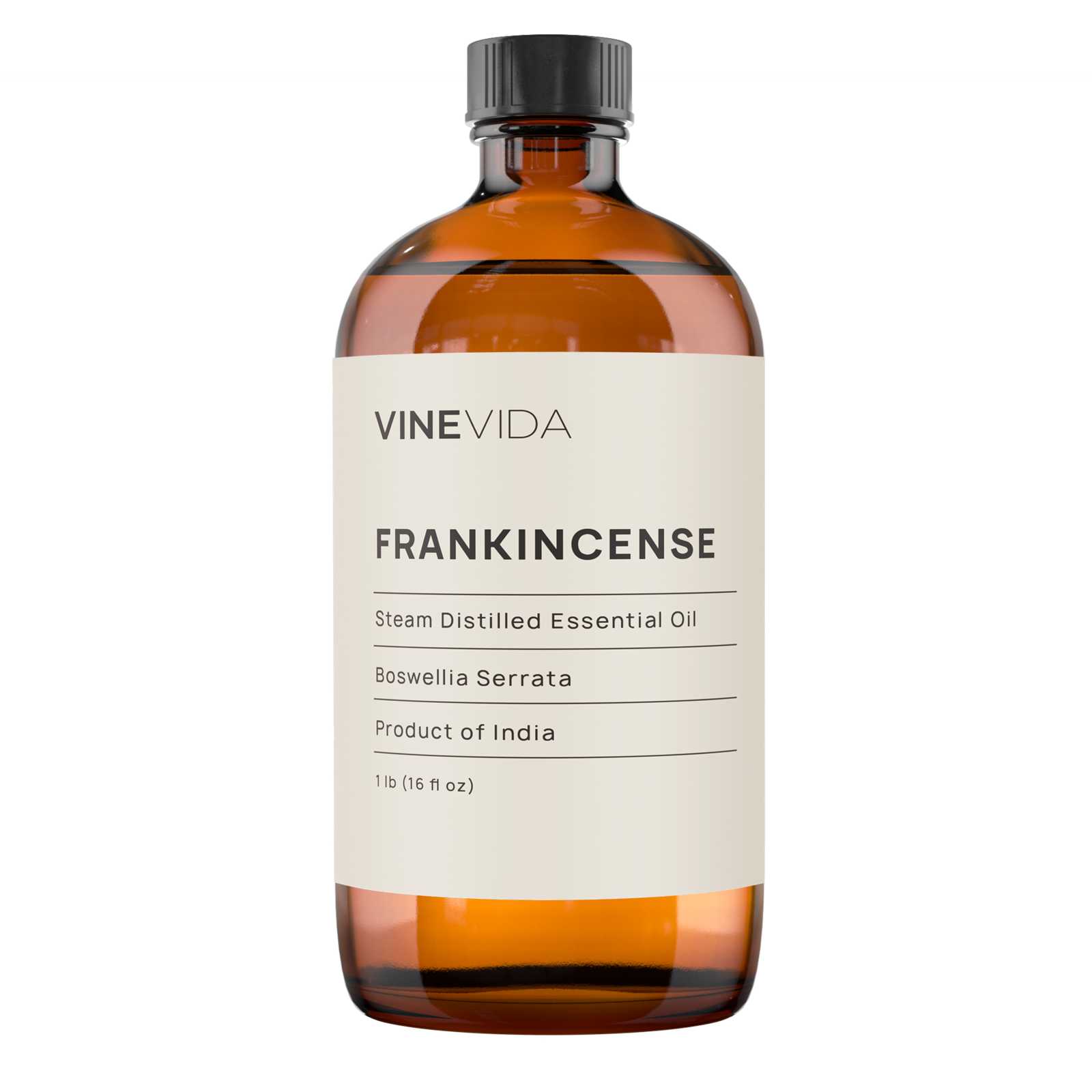
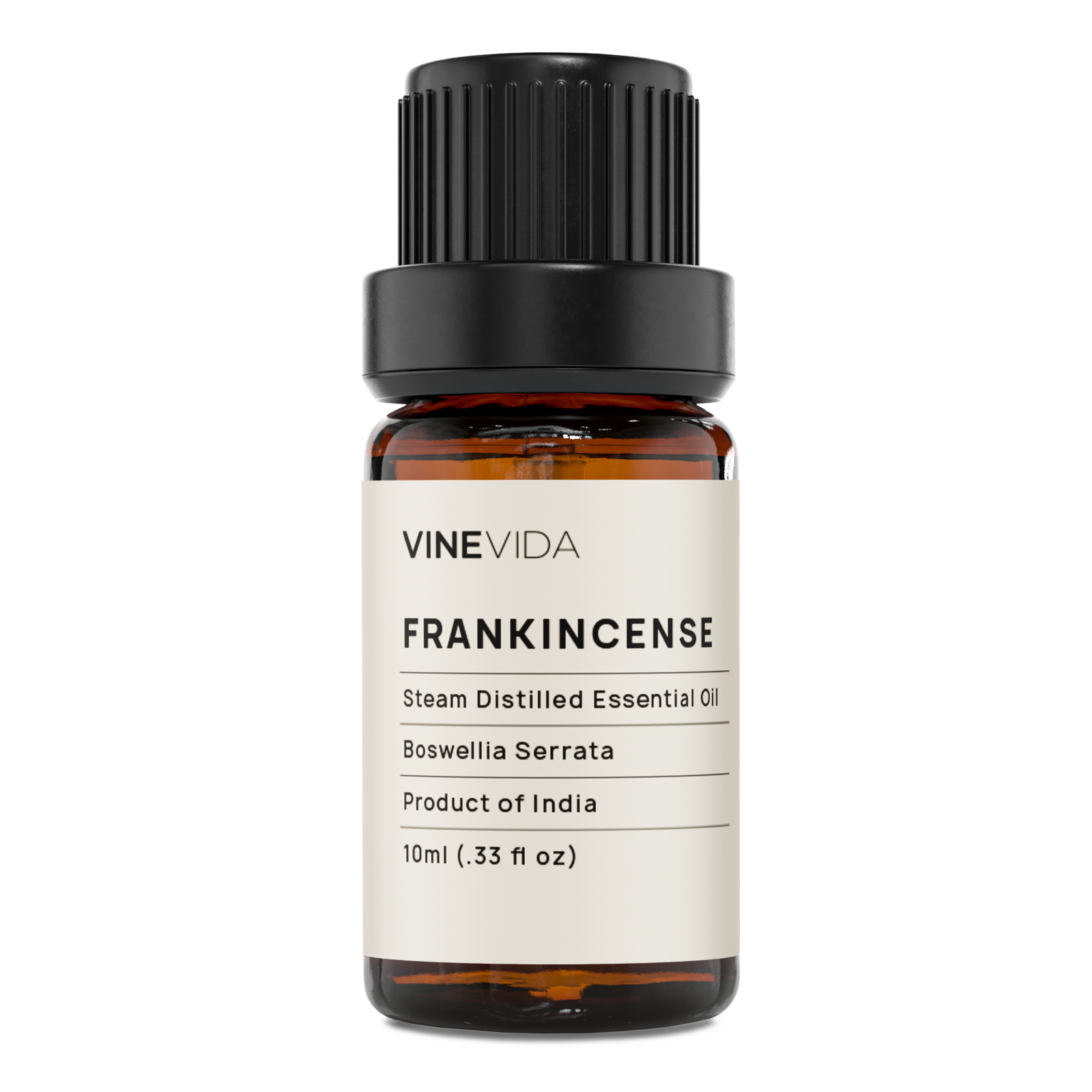
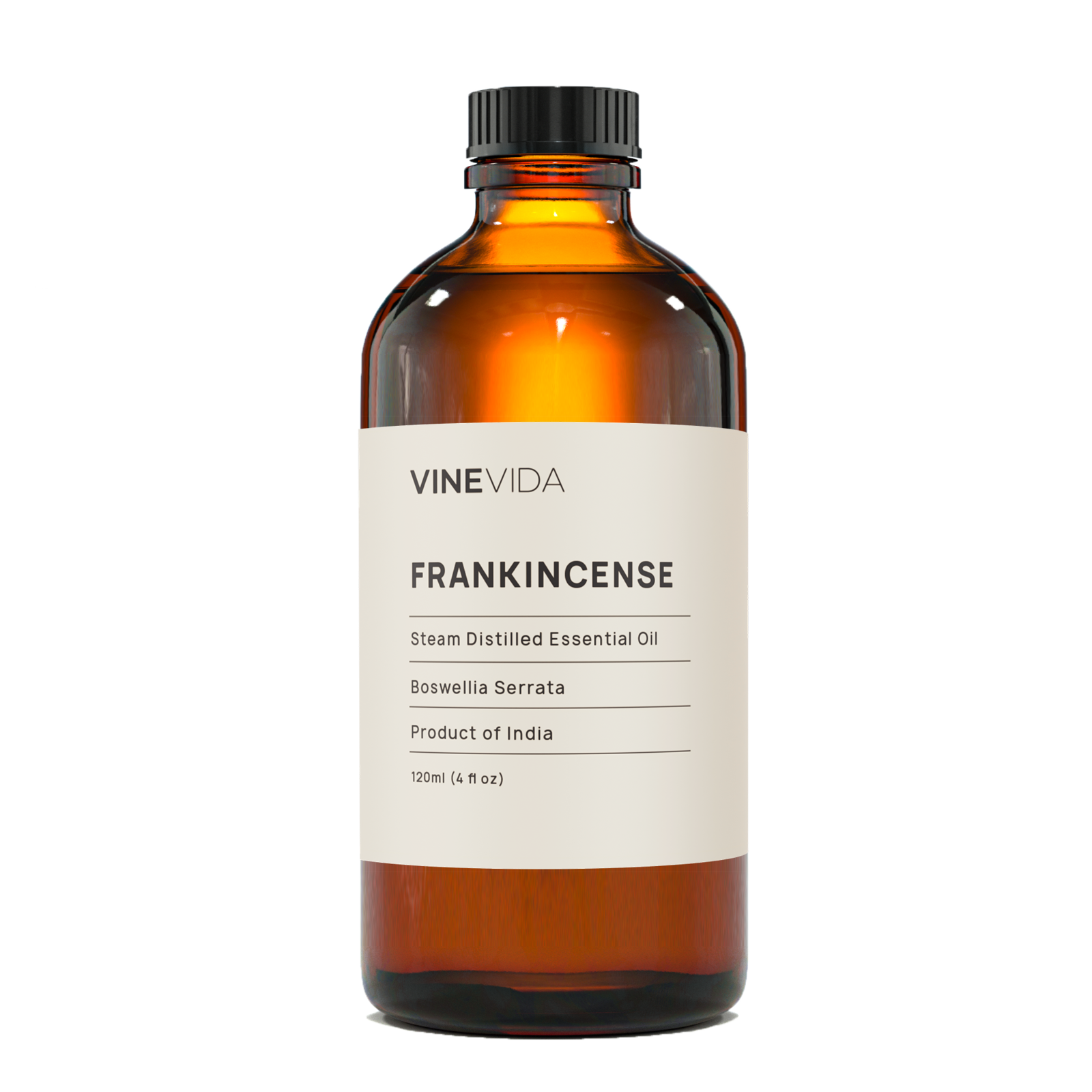
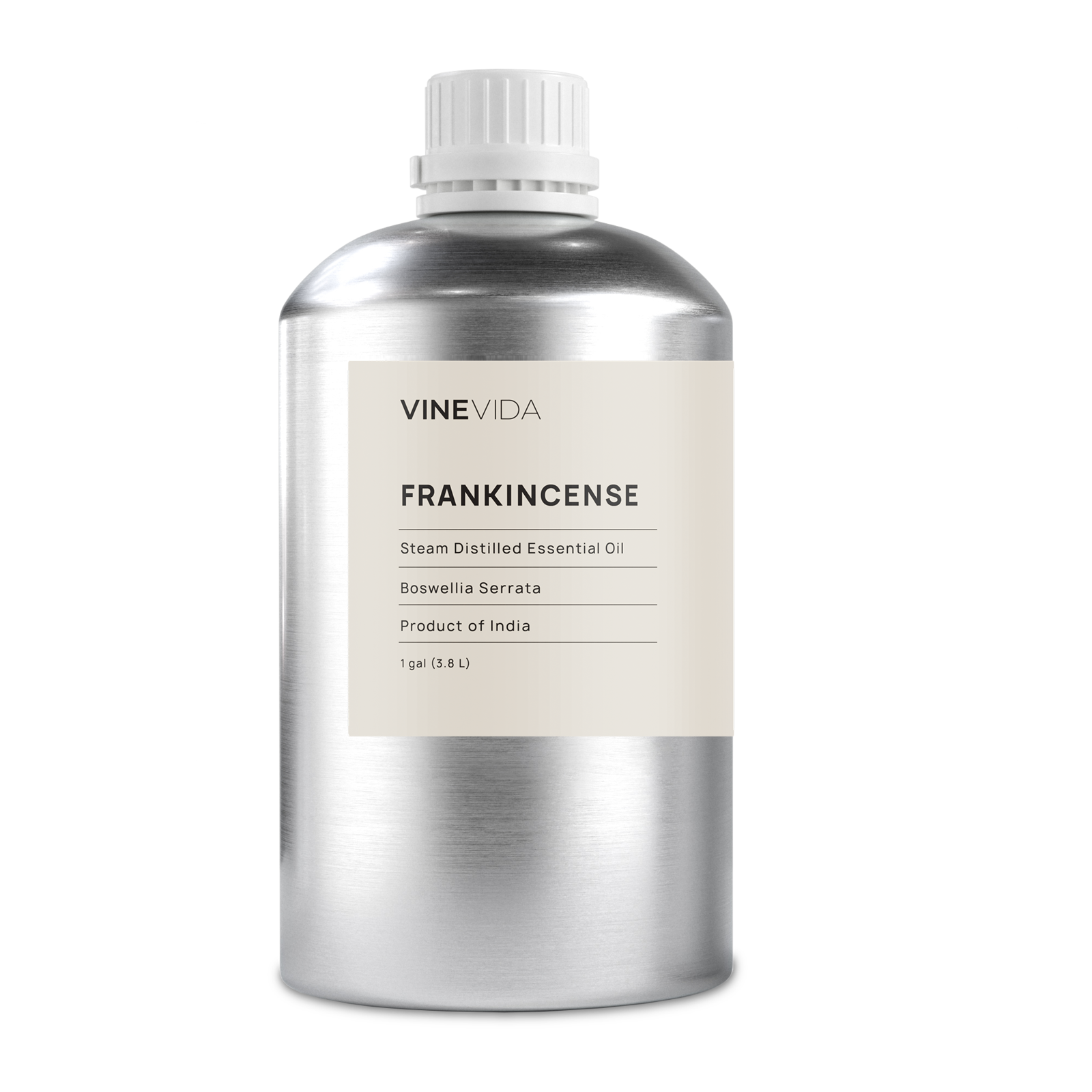
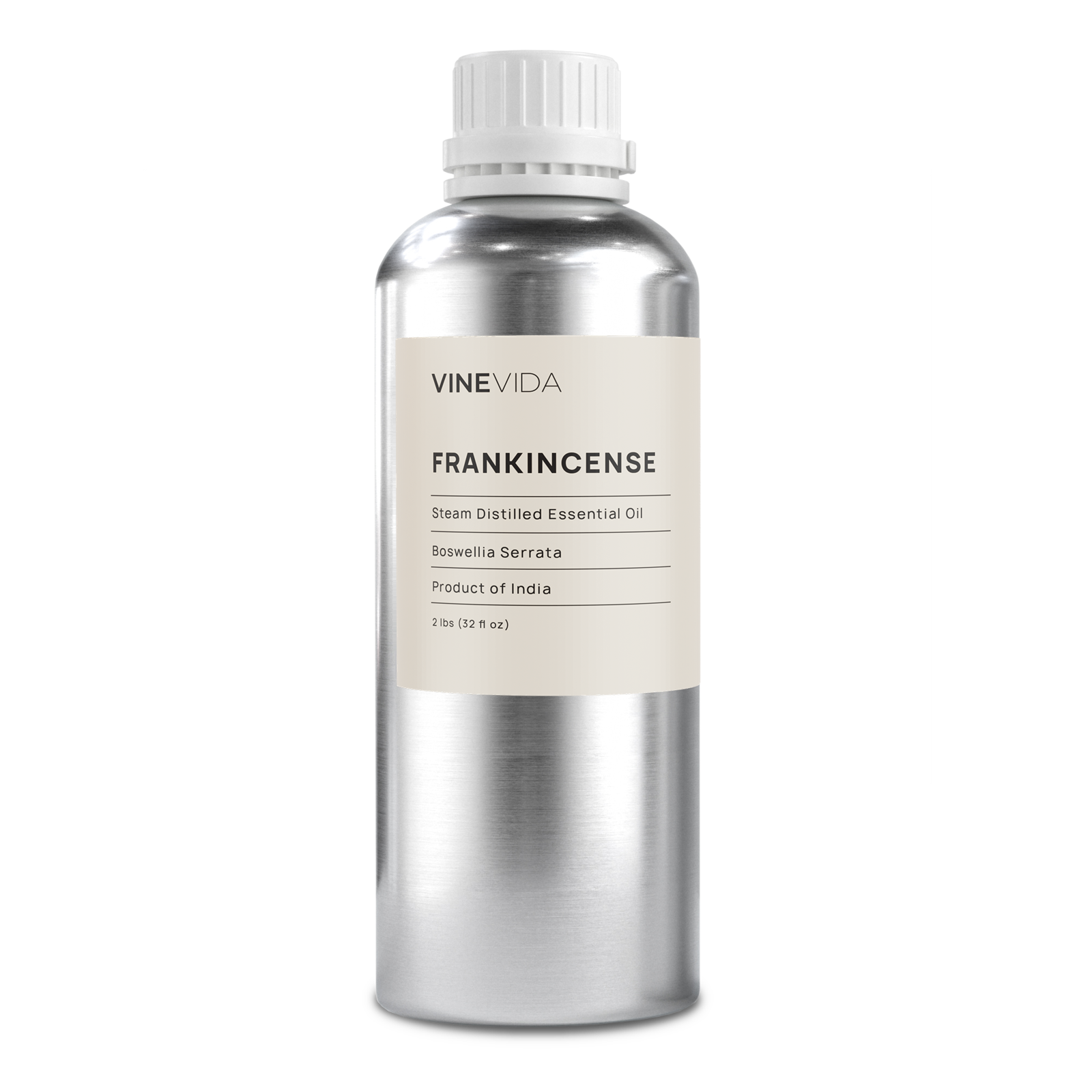
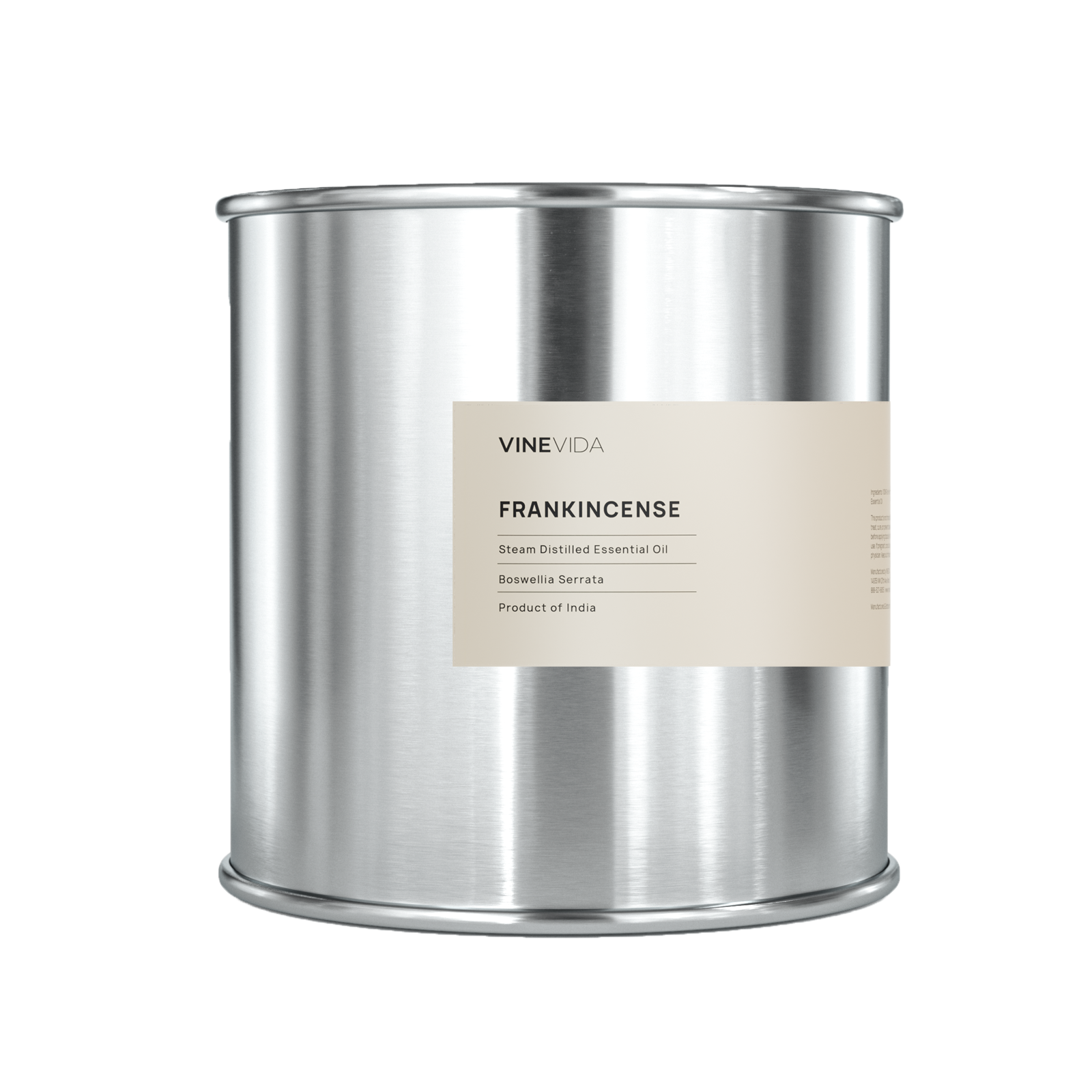
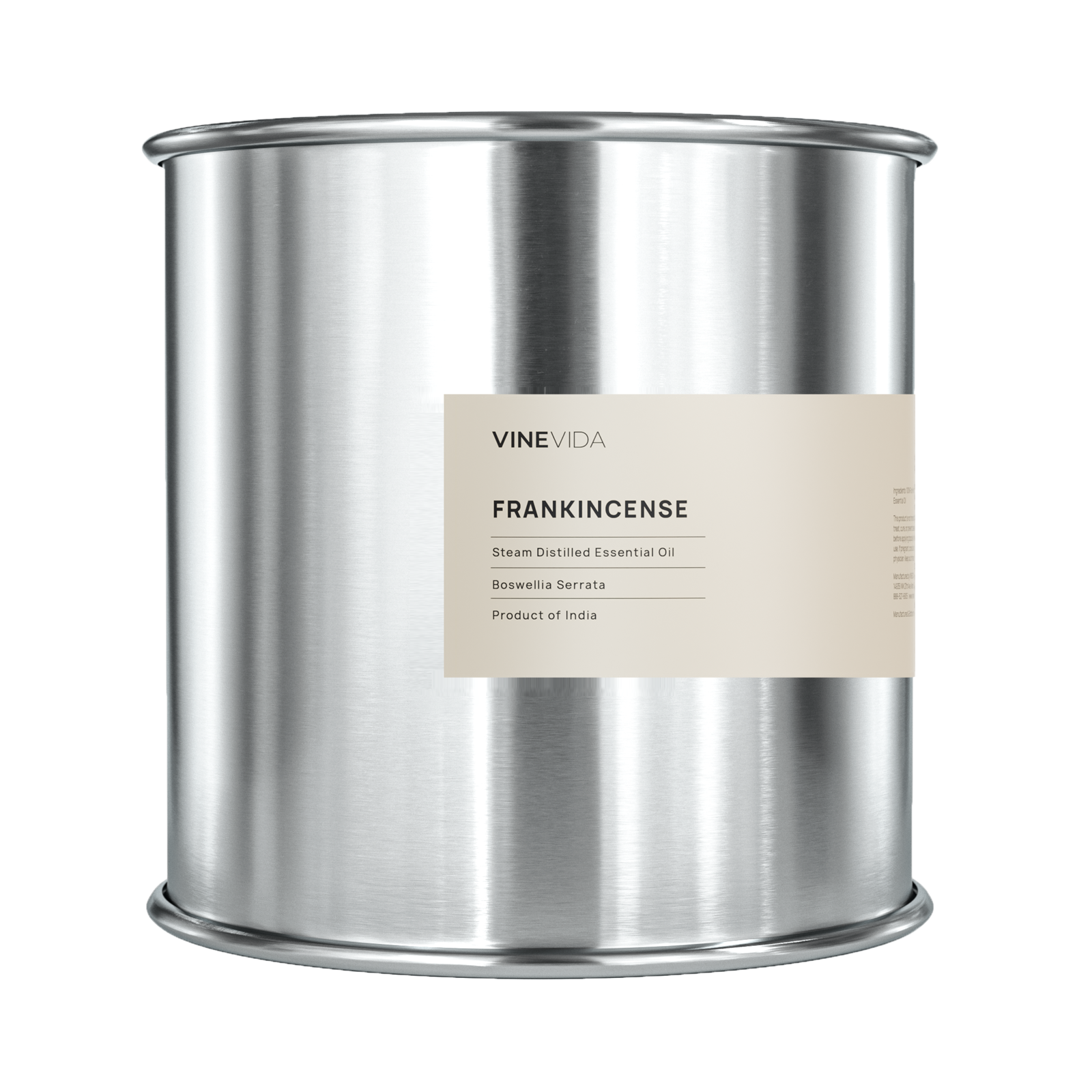
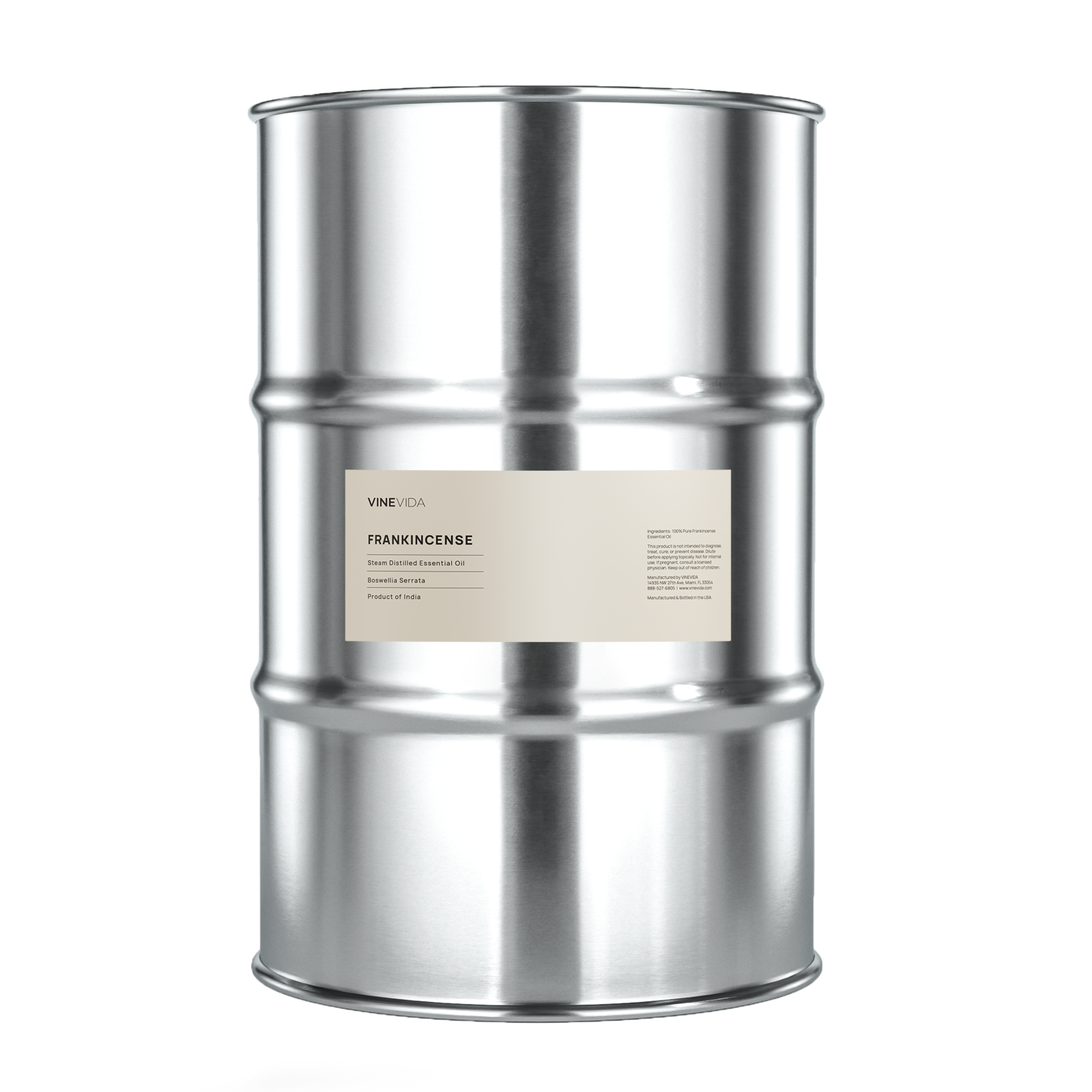





 Safety Data Sheet
Safety Data Sheet


















